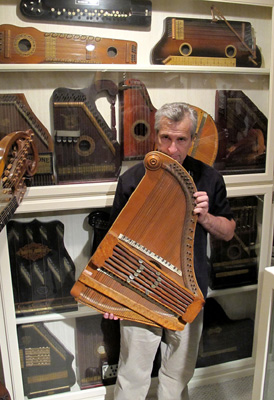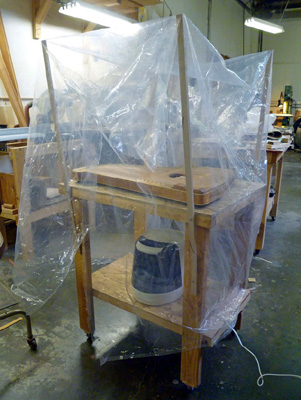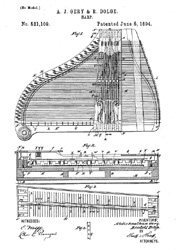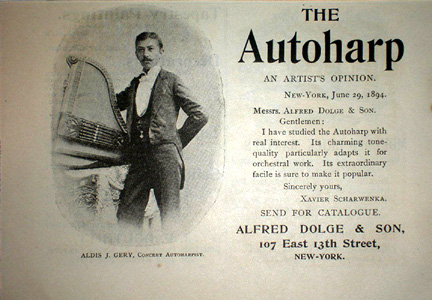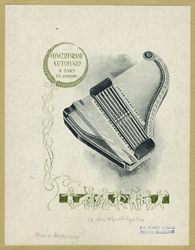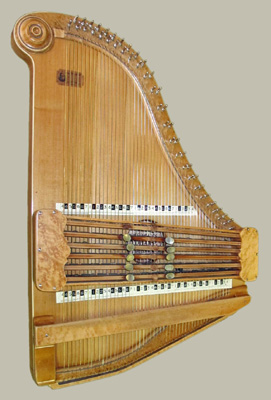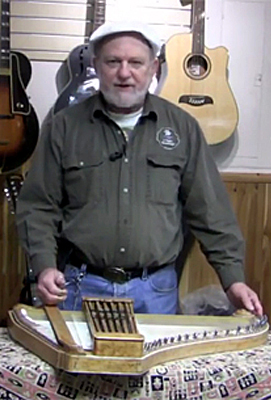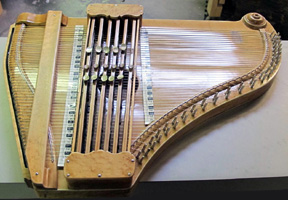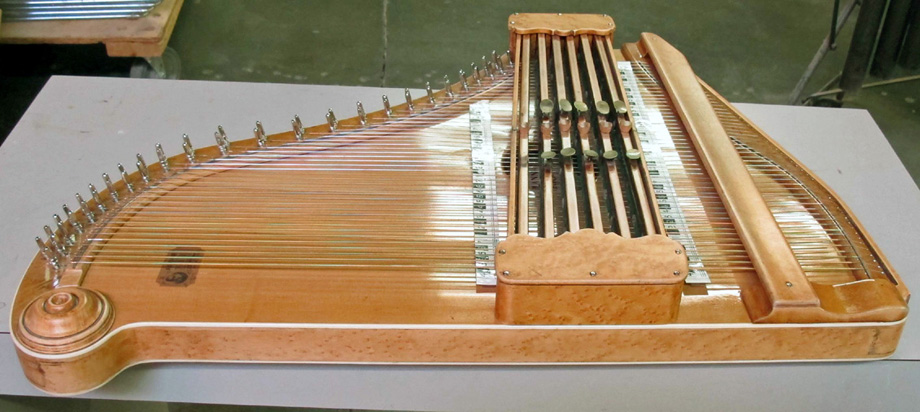|
When I first visited Gryphon in the 1980’s I made a point of locating their example of the “Concert Grand Autoharp” (aka “concert Autoharp” - both names seem to have been used). I stared at it up on the wall for some time, before shaking my head in wonder and moving on (I was there to buy the mando-bass they had gathering dust in their attic). I had no idea if I’d ever see another of these in my life, but silently added it to my fantasy world “Miner Museum Wish List.” A couple decades later and my lust all but forgotten, one of these Holy Grails showed up on eBay. It looked to be in decent condition and so despite having essentially zero funds I put in a healthy bid, only to find myself the underbidder (it went for over two grand). Since then, I often kicked myself for not going further out on a limb for what was clearly something I might never see again.
I would learn later that the Autoharp community was (naturally) aware of the auction and watching it unfold, so I was surprised when I got it for half of my bid. When it arrived in August, 2014, having expected the worse, I was more than thrilled with this “basket case.” Still, could its condition be improved? I had recently been in contact about fretless zithers with one Cathy Beyer, who referred me to Peter d”Aigle. I next discovered a YouTube video by a fellow named Michael Wolkomer demonstrating and discussing the history of his own concert Autoharp that had been restored by Pete. (At the time, I assumed this was the previous eBay instrument, but it was not). Contacting Peter, it turns out he was the guy – perhaps the only guy – able and willing to take on the project. A builder and restorer of Autoharps (and the occasional Dolceola), he also publishes the Autoharp Quarterly and so is smack dab in the center of the Autoharp universe. Unsurprisingly (much like me with harp guitars), he knew of all the known surviving Concert Grands out there – of which mine was now only number six. Including mine, he has now restored half of them! He had completed Wolkomer’s (serial #17) in May, 2013 and that first eBay specimen in January, 2011 (serial #6, for a private collector). In the fall of 2014 he began the two-plus year project of salvaging mine, successfully completed at the end of February, 2017. After complete disassembly, the box spent a full year in its own private sauna – a humidity tent designed to optimize conditions for straightening the soundboard (which was so warped, the top was touching the back!) and drawing together the three or four gaping cracks. I can only imagine my poor baby audibly creaking and groaning under Pete’s torture rack for months on end! |
||
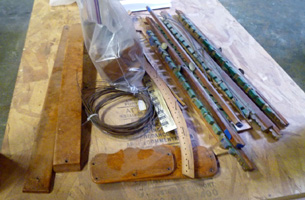 |
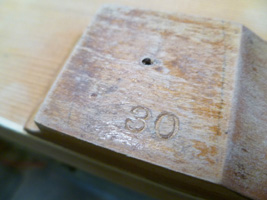 |
|
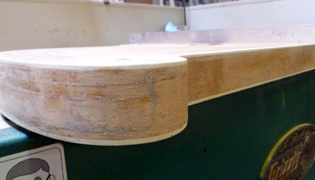 |
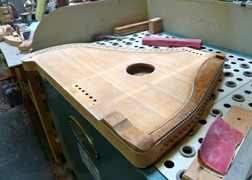 |
|
|
Meanwhile, all the mechanics were cleaned and restored, including custom fabrication of some of the missing pieces. Once disassembled, its serial number was revealed: Number 30. As it is normally hidden from view, we don’t (yet) know the numbers of the remaining three, which include Gryphon’s, one in the Oregon Benton County Museum and another in a private collection (examined by a friend of Peter’s). So at this moment we can assume that at least thirty of these extravagant tabletop fretless zithers were produced, which is a pretty small number, considering the Dolge Company’s aggressive marketing and high hopes of success for their new flagship model.
Unlike all the surviving specimens, the patent includes a curious feature: an extra fretted string on the bass side (of which the patent allows “one or more”) – used as a reference in tuning the open chromatic strings and/or for playing a melody as in the concert zither. So in this iteration, it’s really a hybrid instrument – part fretless zither (the Autoharp) and part concert zither (which has fretted melody strings and open accompaniment strings). Note the fancy covers over the mechanism ends with lyre-shaped cutouts (intended to allow more sound through!). |
||
|
The concert model appeared in the catalog until 1899, but may have only been built for a year or two. Its lack of success can doubtless be attributed to its price: $150 in 1894, then – probably once they learned what it took to actually build – $250 in 1895. That’s a serious investment for a desk top musical instrument at that time! |
||
|
And now it’s become my serious investment. My only regret was the need to partially refinish it, due to the severe deformation and cracks in the soundboard, back and frame. Pete walked a fine line with a natural, aged look – and a nice repro label decal, as the original had come off and disappeared. But importantly, the thing plays – the soundboard still with some warpage, but significantly reduced with cracks closed up tight.
Sideview diagrams are shown in Blackley’s book and the patent, and Peter demonstrates them on my instrument in his detailed video, something I will have to keep referring to if I am ever to figure this thing out! |
||
 I first learned of this incredible example of
American plucked string musical instrument history in Betty Blackley’s
1983 book The Autoharp.
I first learned of this incredible example of
American plucked string musical instrument history in Betty Blackley’s
1983 book The Autoharp.